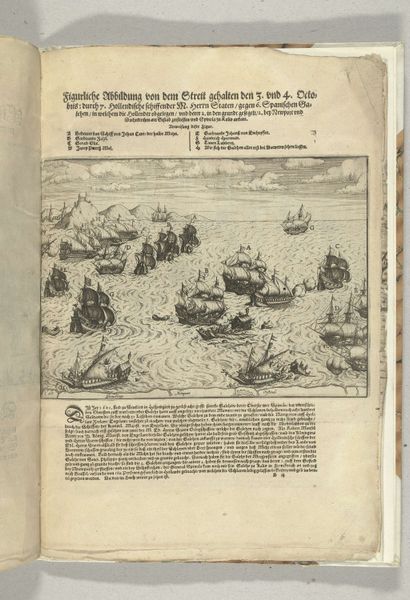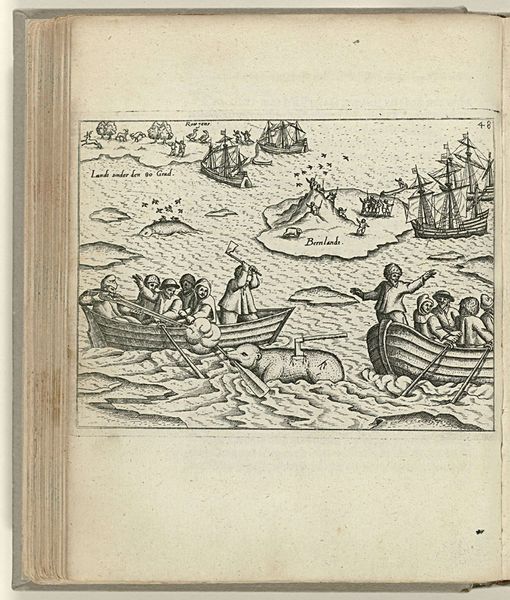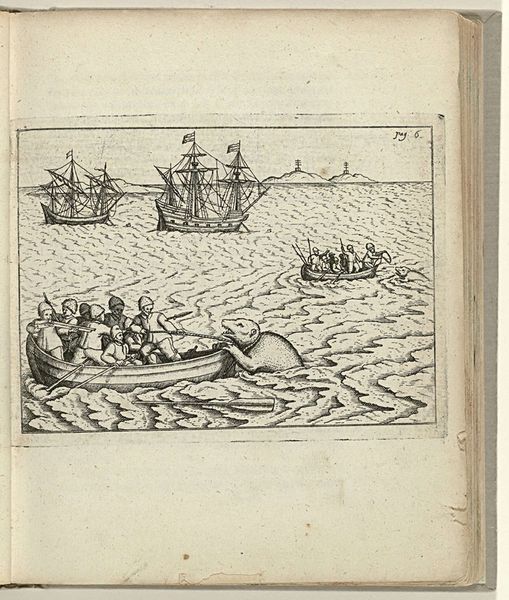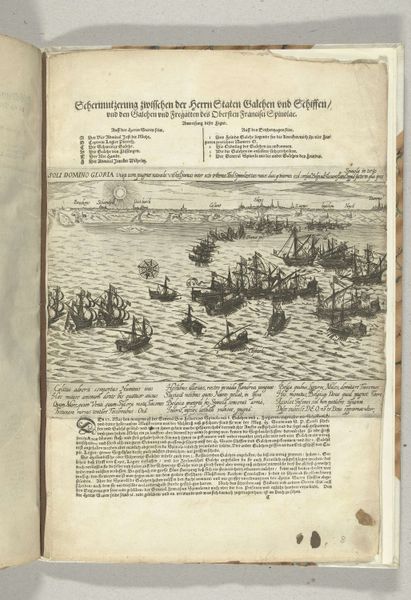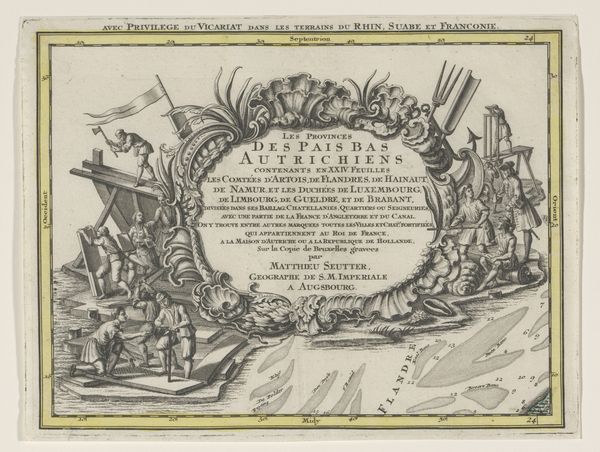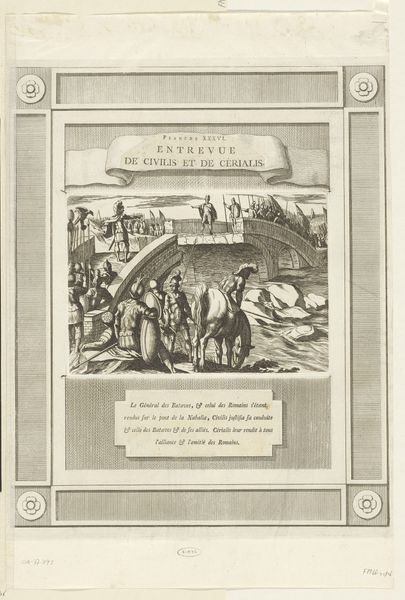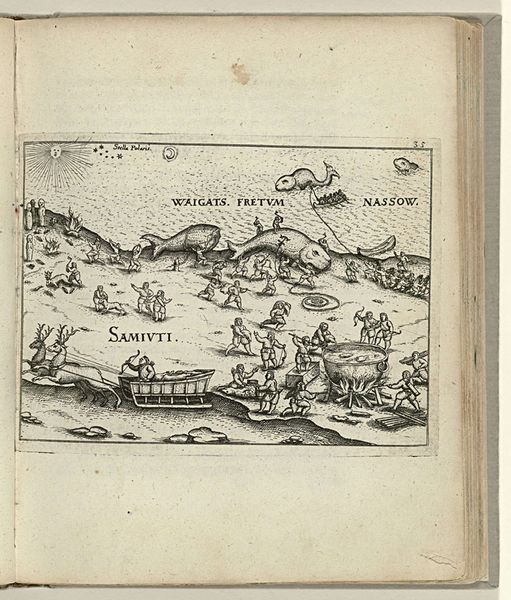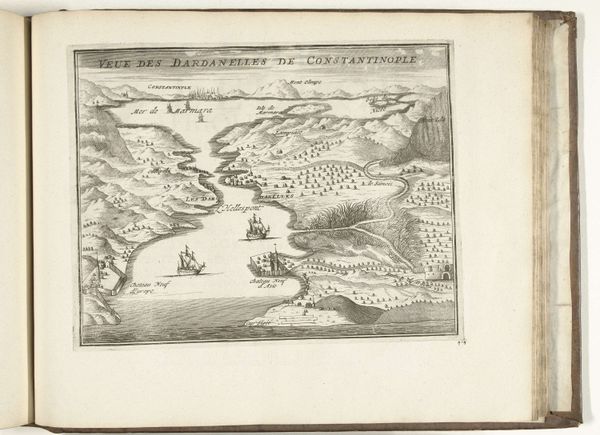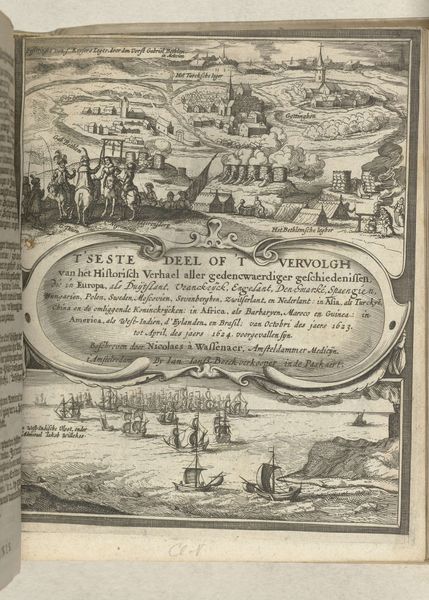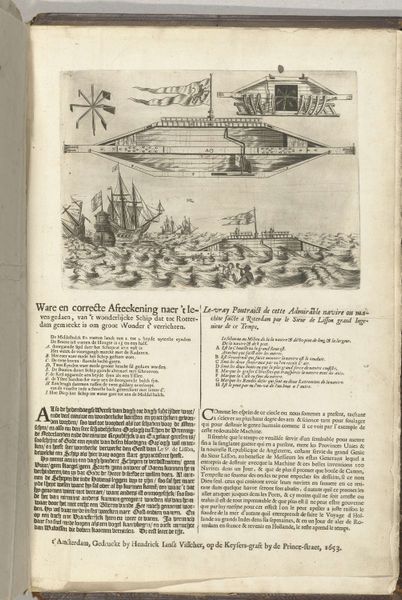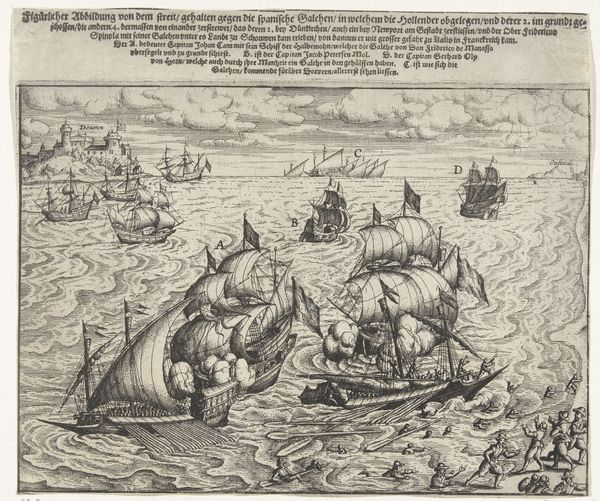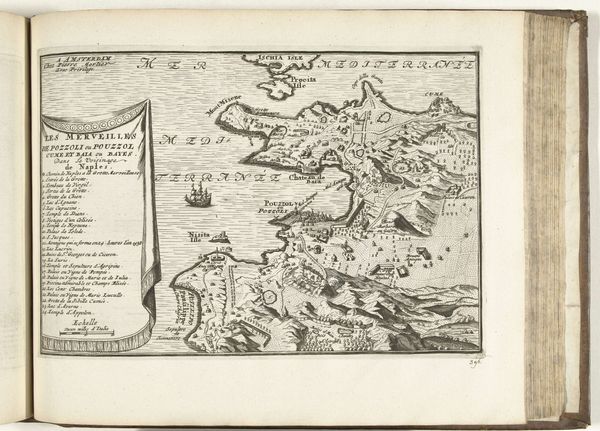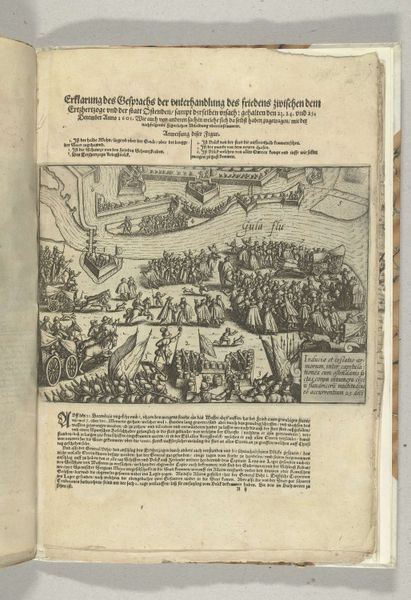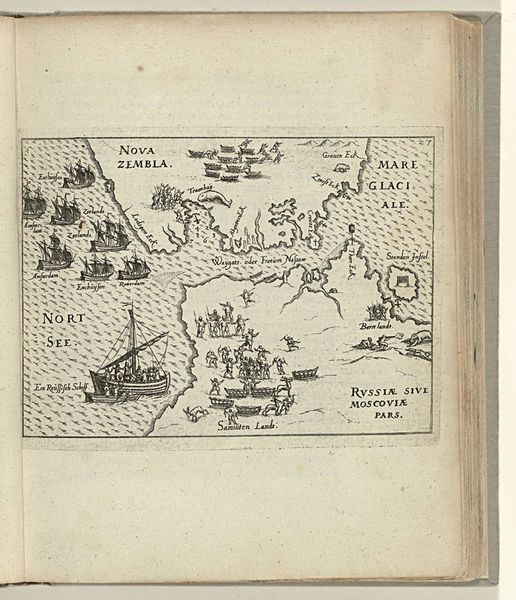
Titelprent voor de Appendix: de vernietiging van Spaanse galeien, 3 oktober 1602 1602 - 1604
0:00
0:00
print, engraving
#
baroque
# print
#
cityscape
#
history-painting
#
engraving
Dimensions: height 173 mm, width 235 mm, height 350 mm, width 240 mm
Copyright: Rijks Museum: Open Domain
Curator: Here we have an engraving titled "Titelprent voor de Appendix: de vernietiging van Spaanse galeien, 3 oktober 1602." Although currently attributed to an anonymous artist, it dates to the early 17th century and is held in the Rijksmuseum's collection. It's a cityscape depicting a dramatic naval battle. Editor: My initial impression is one of chaos meticulously rendered. The sheer density of ships, each seemingly caught in a whirlwind of conflict, speaks volumes. Even in this small print, you feel the swell of the sea and the frenzy of the fight. Curator: Indeed, it visualizes the clash between Dutch and Spanish forces. You can see how this image played a role in shaping national identity during the early modern era. The victory depicted served as propaganda. Editor: Exactly. Beyond the bravado of naval superiority, who suffered in this victory? What was the human cost, beyond these stylized representations of ships ablaze? Were the common sailors afforded any agency beyond pawns in a larger imperial game? Curator: Those questions open to larger historical context. Remember this image functions partly as documentation; the meticulous details point to a desire for accuracy, a way of recording a significant event. Editor: But accuracy for whom, and to what end? We must acknowledge its place within the larger narrative of colonization. What impact did this "victory" have on other lands and other peoples beyond the immediate conflict between empires? How can we ensure it remains ethically charged? Curator: It is important to acknowledge those complex layers, especially with an artwork intended to galvanize patriotic sentiment. Images such as these often mask uncomfortable truths about violence and domination. Editor: Agreed. Even in a piece so seemingly straightforward in its historical depiction, interrogating its power and underlying narrative reveals a more intricate picture. It reminds us that historical accounts are never truly neutral.
Comments
No comments
Be the first to comment and join the conversation on the ultimate creative platform.
